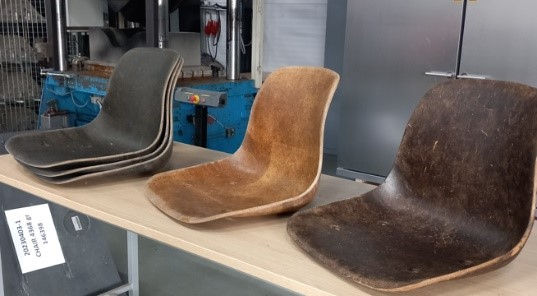Working With Re-Used Furniture
- info900853
- Jul 21, 2021
- 3 min read
Re-used - or second-hand - furniture is a great way to reduce carbon emissions and encourage attitude changes regarding sustainability. We believe that reusing existing materials/fit-out and furniture helps minimize the throwaway culture and sets a great example by reducing landfill waste.
Some flexibility will be needed along the way, but we firmly believe that with an open mind and some innovative ideas; good designers can help you realize your vision with second-hand furniture. Reused furniture can be your own (in which case an existing furniture audit may be required) or purchased from other suppliers. Try to avoid constantly upgrading furniture to match the latest fads and trends. Choosing classic, timeless pieces aids longevity as they will never look out of place.

Sustainability
This is by far the strongest argument for using reused furnishings. With second-hand, you circumvent the need for more products to be produced thereby saving on emissions, water, and other resources; also saves items from going to landfills.
In 2018, 774,000 metric tonnes of CO2 were emitted from the production of furniture in the UK alone. Leading by example helps challenge the industry and a throwaway culture.
Affordability
Reused furniture always costs less than buying new. Often, high-quality pieces from brands such as Vitra, Knoll, and Herman Miller are available at a fraction of the price.
Undoubtedly some negotiation could take place with reused furniture.
Customization
Reused furniture is far easier (and feels less sacrilegious) to alter and personalise than brand-new furniture. This means you can have your furniture made bespoke at a fraction of the cost!
Choosing local tradespeople ensures a lower carbon footprint and supports your local community.
Procurement
In the early stages, it is unknown how much furniture there may be, how far away it will be, and whether one will need to view it in person before procuring it. Out of town visits to suppliers may add time additionally.
It can sometimes take a while to source the perfect piece as it is impossible to predict what will be available and when. It may be difficult to get team approval on all the second-hand furniture since it will go quickly and tends to be ‘snapped up’.
You will need to be flexible when picking pieces - which some may see as a downside. On the other hand, as nothing needs manufacturing, there are no lead times, so in some cases, it may be quicker.
The furniture may need to be sourced over time, as new items will continually appear on the market - a warehouse may be required to store the collected furniture.
Brands
Brands such as Herman Miller, Bisley and Senator, to name a few, are often stocked by second-hand office furniture resellers.
Working with good designers who have experience in the industry can advise on which brands are the best and may be able to identify brands on furniture that has no visible stickers or logos.
Quality
Good designers can help source furniture that is in top quality condition and will know or can find out its material compositions and advise on its lifespan. Wood is a good, robust option as it is a sustainable material and instrumental to the circular economy.
Often the quality of reused furniture can be better than a similar cost for something new.
Other Considerations
Reused furniture will mainly have no warranty, we suspect. However, it is worth finding out if a piece is still within its warranty period or if the warranty can be transferred.
Specialists can advise on cleaning, repairs and refurbishing – don’t forget to factor in these costs.
Reused furniture can be unique and appealing – and bang on trend!


